Ten facts you probably didn't know about Spanish wine

It was the Romans' favourite drink, a muse to Picasso and fell victim to the fascist regime of dicator Francisco Franco. Wine blogger Timmer Brown lifts the lid on everything you (probably) didn't know about Spanish vino.
1) Spanish wine was the Romans' favourite tipple
Wine has been produced in Spain since the first century AD. The Roman historian Pliny the elder raved about wines made from the area known today as Alella, which is 20 minutes from Barcelona. Another Roman, Ovid, noted the most popular wine in Rome (from Spain of course) known as Saguntum, was only good for getting your mistress drunk. The Catalan regional government found remnants of an ancient Roman wine press in Teia, near Alella, and have developed an interactive museum tour to see just how wine was made during this time.
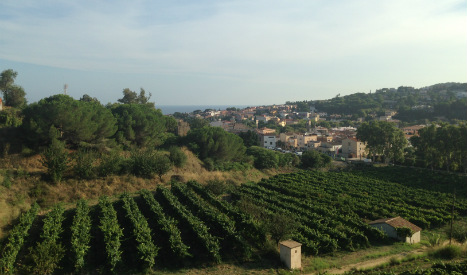
The town of Alella, where wine production began in Roman times. Photo: Timmer Brown
2) A record breaking exporter
Spain is the top exporter of wine in the world. In 2021, Spain exported 222 million litres with the majority of it going to France. Not only is Spain a top exporter, but in 2021 it became the second largest producer of wine, behind Italy and now ahead of France. While everyone thinks of Rioja when they think of Spanish wine, the top area for volume is actually Castille-La Mancha near the capital of Madrid.
3. Different classifications
Spain has 78 sub-regions of wine across 17 provinces of the country, including the Balearic Islands and the Canary Islands. They are classified as Denominación de Origen (DO) and Denominación de Origen Calificada (DOC). Both denote wineries meet stringent requirements to produce wine, with the DOC designation being the highest quality. Currently only two regions have met DOC requirement in Spain, Rioja and Priorat. In Catalonia, it is referred to as DOQ Priorat due to the Catalan language spelling and pronunciation.
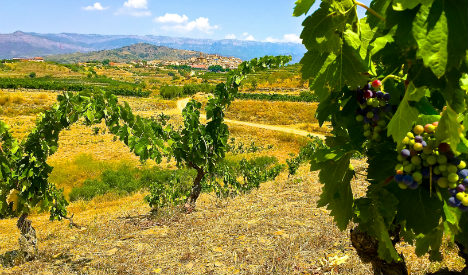
Priorat is one of two Spanish regions to have attained a DOC classification. Photo: Timmer Brown
4. There are over 400 grape varieties in Spain!
Yes, 400! However, the bulk of the production comes from Tempranillo, Garnacha, Monastrell, Albariño, Palomino, Airen, Macabeo, Parellada, and Xarel-lo. The most widely planted is Airen, a white wine grape which is valued for a variety of reasons including its hardiness. Second is Tempranillo, the popular grape of Rioja, followed closely by Garnacha which is planted throughout Spain but mostly known internationally due to the Catalan region of Priorat.
5. Cava isn't just from Catalonia
Everyone knows that Cava is the Spanish equivalent of sparkling wine, which utilizes a similar method of production as Champagne. Although 95 percent of Cava production comes from Catalonia where it originated in the late 19th century at Codorniu Winery in Sant Sadurni d’Anoia it can also be produced in Aragon, Castile and Leon, Valencia, Extremadura, Navarra, Basque Country and Rioja. It is regulated by DO Cava, which determines the rules and regulations of the production of Cava.
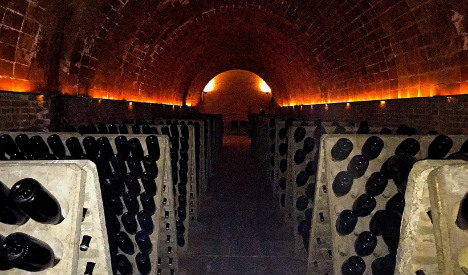
The cava cave at the Raventos i Blanc winery in Sant Sadurni d’Anoia. The owners are direct descendants of the originator of cava. Photo: Timmer Brown.
6.Spanish wine was Picasso's muse.
Pablo Picasso’s inspiration for the cubism movement came from his time in DO Terra Alta town of Horta de Sant Joan, a two and a half hour drive south of Barcelona and near the Catalan border town of Tortosa. Picasso spent time there while he was splitting his time between Barcelona and Paris beginning in 1901. In fact, in many of Picasso’s paintings you can see the elements of the people from the towns, and also the vineyards where he sometimes slept in at night under the stars. Wine is also directly in many of his works, including Bottle and Wine Glass on a Table from 1912.
7. La Rioja has been making wines for nearly a thousand years
The first mention of the name Rioja in official documents as a wine producing region dates back to 1092, while during the same time, King Garcia Sanchez I donated lands to the monastery of San Millan de la Cogolla, which included the vineyards. Monks and monasteries played an important role in wine production all across Spain after lands were reconquered from the Moors starting at that time, and leading up to 1834 when legislations saw monastery lands confiscated for the benefit of the common citizens of Spain.
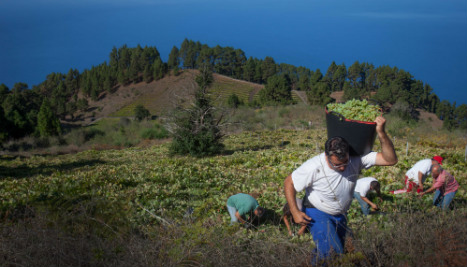
Members of the Sánchez family in their vineyard on La Palma, Canary Islands. Photo: AFP
8. The Franco years were dark days for Spanish wine
The Franco dictatorship was a dark time for wine production, as wine was not allowed to be exported. Franco was a teetotaller, believing wine should only be used for church sacraments and not much else. Still, when it was discovered that US President Eisenhower was a fan of sparkling wines, Franco commissioned Perelada to produce a special cava for his visit to Spain in December of 1959. Some of the original bottles from the commission are on display at the winery. Salvador Dali was also a fan of Perelada cava, offering it to his guests who came to visit.
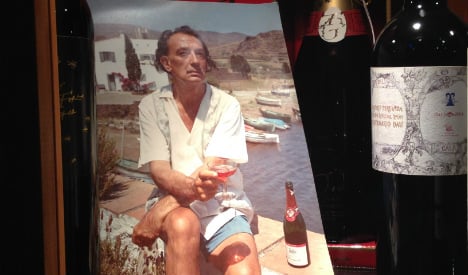 A photo from the Perelada winery museum showing Salvador Dali enjoying a glass of Perelada near his seaside home in Cadaqués. Photo: Timmer Brown.
9. Spain is the number one worldwide producer of organic wine.
Twenty-seven percent of organic wine production happens in Spain, with over 80.000 hectares of land is specifically registered and documented as organic. Even one of Spain’s largest wine producers, Torres, has one third of their vineyards as organic. This has been a meteoric rise, as organic wineries were rare in Spain up until the 1990s. However, due to traditional winemaking techniques, many winemakers throughout Spain have refused to use chemicals or pesticides in wine production from the 1950s up to the present time. The earliest documentation of an organic winery is from the 1970s at the Penedes vineyard of Albet i Noya.
10. Sherry is uniquely Spanish
Sherry is originally from the Jerez region of southern Spain. In fact, other areas around the world aren’t allowed to call themselves just Sherry as the region has a trademark on the brand, similar to the French region of Champagne. Sherry production dates back to the 8th century, and speculation says it’s been around for much longer. It was first exported in the 12th century and became extremely popular in England, and other areas began to adopt the methods to make their own variation of Sherry. In the 16th century Sherry was regarded as the finest wine available in Europe.
Timmer moved to the Barcelona region four years ago after traveling the world for 15 years, working in marketing and public relations. He founded catalunyawine.com in 2014 to promote the wine region of Catalonia to the English speaking public. Now he travels to the vineyards of the region interviewing winemakers and exploring the history of the wine region. You can follow the journey on Twitter and Instagram @catalunyawine and also on the website.
A photo from the Perelada winery museum showing Salvador Dali enjoying a glass of Perelada near his seaside home in Cadaqués. Photo: Timmer Brown.
9. Spain is the number one worldwide producer of organic wine.
Twenty-seven percent of organic wine production happens in Spain, with over 80.000 hectares of land is specifically registered and documented as organic. Even one of Spain’s largest wine producers, Torres, has one third of their vineyards as organic. This has been a meteoric rise, as organic wineries were rare in Spain up until the 1990s. However, due to traditional winemaking techniques, many winemakers throughout Spain have refused to use chemicals or pesticides in wine production from the 1950s up to the present time. The earliest documentation of an organic winery is from the 1970s at the Penedes vineyard of Albet i Noya.
10. Sherry is uniquely Spanish
Sherry is originally from the Jerez region of southern Spain. In fact, other areas around the world aren’t allowed to call themselves just Sherry as the region has a trademark on the brand, similar to the French region of Champagne. Sherry production dates back to the 8th century, and speculation says it’s been around for much longer. It was first exported in the 12th century and became extremely popular in England, and other areas began to adopt the methods to make their own variation of Sherry. In the 16th century Sherry was regarded as the finest wine available in Europe.
Timmer moved to the Barcelona region four years ago after traveling the world for 15 years, working in marketing and public relations. He founded catalunyawine.com in 2014 to promote the wine region of Catalonia to the English speaking public. Now he travels to the vineyards of the region interviewing winemakers and exploring the history of the wine region. You can follow the journey on Twitter and Instagram @catalunyawine and also on the website.
Comments
See Also
1) Spanish wine was the Romans' favourite tipple
Wine has been produced in Spain since the first century AD. The Roman historian Pliny the elder raved about wines made from the area known today as Alella, which is 20 minutes from Barcelona. Another Roman, Ovid, noted the most popular wine in Rome (from Spain of course) known as Saguntum, was only good for getting your mistress drunk. The Catalan regional government found remnants of an ancient Roman wine press in Teia, near Alella, and have developed an interactive museum tour to see just how wine was made during this time.

The town of Alella, where wine production began in Roman times. Photo: Timmer Brown
2) A record breaking exporter

Priorat is one of two Spanish regions to have attained a DOC classification. Photo: Timmer Brown
5. Cava isn't just from Catalonia
Everyone knows that Cava is the Spanish equivalent of sparkling wine, which utilizes a similar method of production as Champagne. Although 95 percent of Cava production comes from Catalonia where it originated in the late 19th century at Codorniu Winery in Sant Sadurni d’Anoia it can also be produced in Aragon, Castile and Leon, Valencia, Extremadura, Navarra, Basque Country and Rioja. It is regulated by DO Cava, which determines the rules and regulations of the production of Cava.

The cava cave at the Raventos i Blanc winery in Sant Sadurni d’Anoia. The owners are direct descendants of the originator of cava. Photo: Timmer Brown.
6.Spanish wine was Picasso's muse.

Members of the Sánchez family in their vineyard on La Palma, Canary Islands. Photo: AFP

Join the conversation in our comments section below. Share your own views and experience and if you have a question or suggestion for our journalists then email us at [email protected].
Please keep comments civil, constructive and on topic – and make sure to read our terms of use before getting involved.
Please log in here to leave a comment.